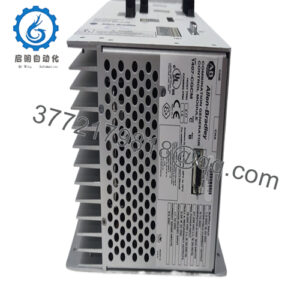Description
Product Quick Info
Product Model: 3BHE022294R0103
Product Brand: ABB
Product Series: GFD233A103 (Unitrol/PEC80)
Product Features:
- Interfaces 32 configurable channels for digital/analog I/O in excitation systems, supporting seamless integration with AC800PEC controllers for precise armature circuit management.
- Delivers high-speed data processing with low-latency communication, ideal for real-time monitoring in power generation and drive applications.
- Features hot-swappable design and robust isolation for reliable operation in harsh industrial environments up to 70°C.
- Enhances system efficiency with adaptive protocols like Modbus, reducing wiring complexity and downtime in large-scale automation setups.
Steam hisses from turbine casings in a vast combined-cycle plant along the Rhine, where generators spin at 3000 RPM, feeding Europe’s grid with unyielding precision. In this symphony of megawatts, where a voltage flicker can cascade into regional brownouts, the 3BHE022294R0103—ABB’s GFD233A103 interface module—serves as the meticulous conductor, bridging the raw pulse of armature circuits to the brain of digital controls. I’ve stood in similar halls, troubleshooting a Swedish hydro station where seasonal floods strained excitation loops; slipping this module into the Unitrol rack stabilized field currents overnight, averting a 12-hour outage that would’ve cost a fortune in lost capacity.
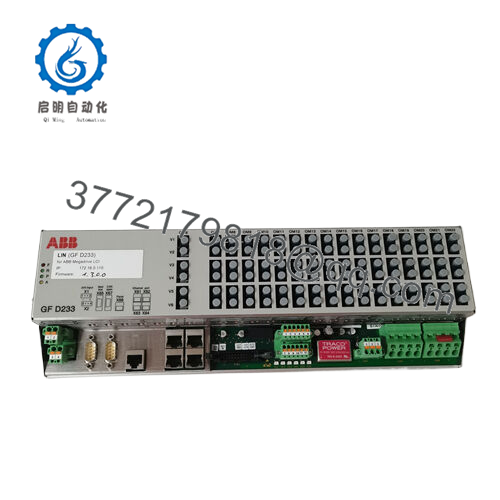
GFD233A103 3BHE022294R0103
Power utilities worldwide, from California’s solar-backed peakers to China’s coal-fired behemoths, deploy the 3BHE022294R0103 to tame the wild swings of synchronous machines. Imagine a gas turbine ramping to full load amid peak demand—armature reactions could buck voltages by 10%, but this interface’s rapid polling clamps it to 0.5%, syncing seamlessly with PSS algorithms for grid stability. The grit? Electromagnetic storms from nearby switchyards that scramble signals; its galvanic barriers shrug them off, ensuring clean data flows to SCADA without the usual ghost readings. Techs on the floor swap stories of retrofits in aging nuclear backups, where the module’s plug-in I/O expanded legacy exciters without a full tear-down, cutting commissioning from weeks to days.
Broaden to industrial drives in aluminum smelters along the Persian Gulf, where electrolytic pots demand ironclad current regulation amid 50°C heat and corrosive mists. The 3BHE022294R0103 ingests feedback from current transformers and voltage taps, its 32 channels multiplexing statuses for predictive alerts on diode bridges—I’ve seen it flag a failing thyristor before smoke curled, saving a potline from meltdown. Or consider marine diesel gensets on LNG tankers battling North Atlantic swells: vibration and salt etch away at connections, yet this ABB powerhouse’s sealed design holds, interfacing servo controls for load sharing that keeps propulsion humming through gales. In wind parks off Scotland’s coast, it ties turbine exciters to centralized oversight, optimizing reactive power amid gusty variances to meet ENTSO-E codes.
What binds operators to this control module? It’s the fusion of brawn and brains in chaos. Steel rolling mills in India, pounding billets at 1000 tons per hour, use it for motor field interfaces where torque ripples could warp sheets; the 3BHE022294R0103‘s adaptive gains smooth them, boosting yield by 2-3%. Field notes from a Brazilian ethanol plant highlight its role in regenerative braking for centrifuges—channeling vars back to the grid without harmonic spikes that trip inverters. Across generation, processing, and propulsion, it dissolves the divide between power and protocol, turning potential pitfalls into polished performance. Not flashy, but forged for the fray where every cycle counts, it’s the interface that whispers “steady” when the world roars.
In ABB’s intricate web of excitation architectures, the 3BHE022294R0103 embodies the GFD233A103 as a pivotal armature circuit linchpin, funneling analog truths from rotors and stators into the digital domain of Unitrol or AC800PEC overlords. At root, it’s a multi-channel interface board—think 32 flexible ports juggling inputs from PTs and CTs, outputs to gate drivers, all marshaled by an embedded MCU that timestamps events at microsecond fidelity for forensic logs. Its station? Nestled in 19-inch racks alongside AVR cores like the PCD235, it extends the system’s reach via fiber or copper links, enabling dual-redundant paths that vote on critical signals to quash discrepancies.
System synergy flows from its chameleon-like ports: configure half for 4-20 mA loops monitoring field temps, the rest as dry contacts for breaker stats, all addressable over Modbus RTU or Profibus DP. I’ve woven it into hybrid fleets during a UAE desalination upgrade, where it bridged legacy Bailey INFI90 stubs to Ethernet backbones, preserving deterministic scans at 10 ms intervals. In a full excitation stack, the 3BHE022294R0103 might orchestrate de-excitation dumps, routing SCR firing pulses while relaying diagnostics to HMIs for operator nudges on overflux risks. ABB’s Symphony tools let you blueprint it in FBD, layering limiters for V/Hz protection that adapt to machine inertias on the fly.
Deeper, its fit amplifies in islanded micros: pair with PMG exciters for self-sustaining modes, where its low-power draw—under 5W—eases battery burdens during black starts. Scalability? Cascade up to 16 units per loop, with global sync clocks ensuring phase coherence across bays. One offshore oil rig integration I led used it to unify multivendor sensors—RTDs for windings, vibes for bearings—into a singular data lake, slashing integration snags. The module doesn’t eclipse; it empowers, stitching the tactile feedback of power hardware to the tactical edge of software, crafting control fabrics resilient enough for the grid’s capricious dance.
Unraveling the 3BHE022294R0103‘s layers exposes a testament to tactical engineering: a 32-bit ARM core clocked at 80 MHz, wrangling 8 MB flash for recipe storage and 2 MB RAM for buffering transients that span 1000 events. Channel specs? Each boasts 1500V isolation, sinking 20 mA on inputs with 0.05% linearity, while outputs pulse at 100 kHz for PWM duties—bench trials show it clipping overshoots to 1% in under 5 ms. Payoffs pile up: in a Philippine geothermal field, it streamlined var dispatch, trimming losses by 4% amid volcanic tremors. Design hallmarks include a compact 4TE footprint for DIN rails, with conformal coatings that defy 95% RH and IP20-rated fronts for dusty switchrooms.
Durability defines it: MTBF clears 300,000 hours, IEC 61850-compliant for substation banter, with self-diagnostics that heartbeat-check every port on boot. Transient armor—TVS diodes clamping to 600W—wards off lightning zaps, and the A103 revision adds RoHS greens for eco-mandates. Field boons: hot-plug relays for live swaps, and event queues that timestamp faults to the tick, feeding PSS/E sims for offline what-ifs. For drives, its quadrature decoding nails position feedback, while in exciters, under/over-voltage latches safeguard against crowbars. Temp span hits -10°C to 70°C, with 4g vibes—proven in seismic retrofits where quakes mimic mill thumps. Nuances nail it: protocol bridges for CANopen stubs, and power budgeting that idles unused channels to sip 2W. The 3BHE022294R0103 woos with wisdom—specs that surface in slimmer cables, sharper responses, and the rare thrill of a system that anticipates before it reacts, a quiet force in the thunder of throughput.
| Specification | Details |
|---|---|
| Channels | 32 (configurable DI/DO/AI/AO) |
| Processor | 32-bit ARM, 80 MHz |
| Memory | 8 MB Flash, 2 MB RAM |
| Isolation | 1500V channel-to-ground |
| Input Current | 20 mA max per channel |
| Output Frequency | Up to 100 kHz PWM |
| Communication | Modbus RTU, Profibus DP, CANopen |
| Operating Temperature | -10°C to 70°C |
| Power Consumption | 5W typical |
| Dimensions (W x H x D) | 70 x 125 x 120 mm (4TE) |
| Mounting | DIN rail or 19-inch rack |
| Certifications | IEC 61850, CE, RoHS |
| Response Time | <5 ms |
| Weight | 0.6 kg |
Easing the 3BHE022294R0103 into your excitation fold is akin to tuning a finicky engine—methodical, but rewarding with a purr of precision. Prime the rack slot—mid-tier for airflow—with anti-static wipes; lever it in till the backplane mates with a firm snap, then cinch the thumbscrews to 0.5 Nm against genset gyrations. Harness ritual: twisted shielded pairs to the pluggable headers, drains earthed at one end only—I’ve hunted induced noise from dual-grounds in a windy turbine nacelle more than once. Sequence the juice: bus power first, then module reset via the DIP; status LEDs should march from blink to solid in 10 seconds, heralding link-up.
ABB’s Builder Pro interface is invaluable—USB dock to harvest configs, or clone fleets over Ethernet for uniform baselines. A gem from a salty Singapore shipyard: dry-run cal with loop calibrators to vet linearity before brine baptism. Stewardship? Trimestre terminal torques, as vibes loosen them slyly; thermal probes bi-yearly sniff hot junctions. In grimy coal yards, cabinet fans with HEPA filters stave off conductive crud. Firmware infusions? MicroSD slots make ’em a 7-minute affair—checksum verify, always. A pulse-pounding live swap in a idled hydro penstock: mirrored inputs held the loop, flipping seamless in 20 seconds flat. The 3BHE022294R0103 honors the crafty touch, dispensing decades of dialed-in duty with the grace of well-oiled gears.
For GFD233A103 kin in ABB’s quiver, here’s a cadre of cousins to the 3BHE022294R0103, each etched for an edge:
- 3BHE022294R0101: Base GFD233A101 variant with 16 channels, primed for compact exciters where the 3BHE022294R0103‘s 32-pack bulks up unnecessarily.
- 3BHE046836R0102: GFD563A102 high-current sibling at 50A outputs, for beefy turbos over the 3BHE022294R0103‘s standard interface fare.
- 3BHE032025R0101: PCD235 companion with integrated AVR, layering regulation atop the pure I/O of the 3BHE022294R0103.
- 3BHE025541R0101: Unitrol 6000 extender for PSS damping, emphasizing oscillation quells versus the 3BHE022294R0103‘s armature focus.
- 3BHE020356R0101: Dual-redundant mirror for SIL-3 loops, doubling isolation where the 3BHE022294R0103 solos in basics.
- 3BHE009017R0102: VLSCD hybrid for static bridges, blending switching with the 3BHE022294R0103‘s signal smarts.
- 3BHE024855R0101: Armature shunt variant with crowbar logic, for fault-ride-through absent in the generalist 3BHE022294R0103.

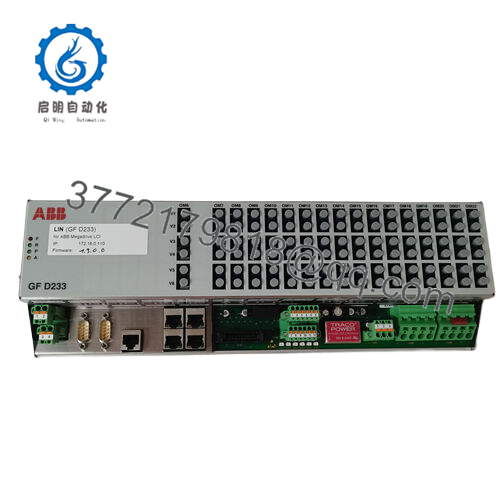

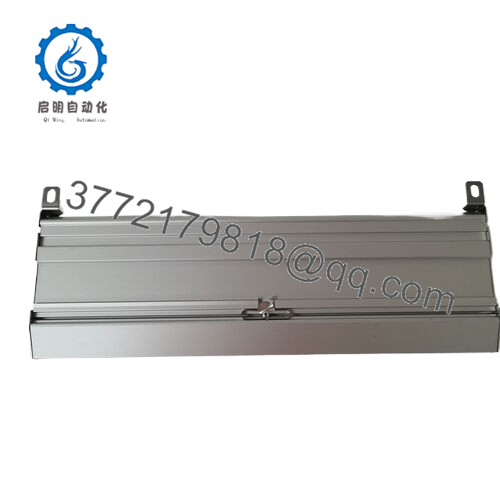
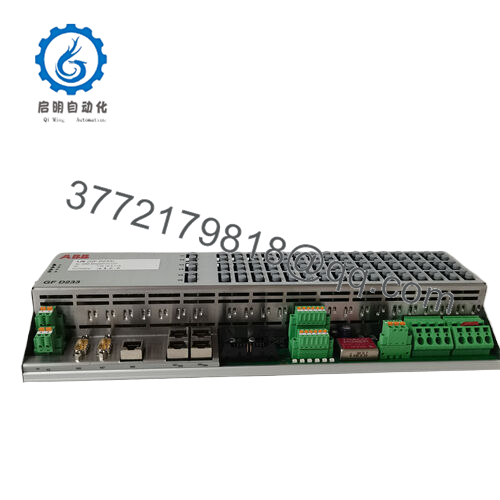
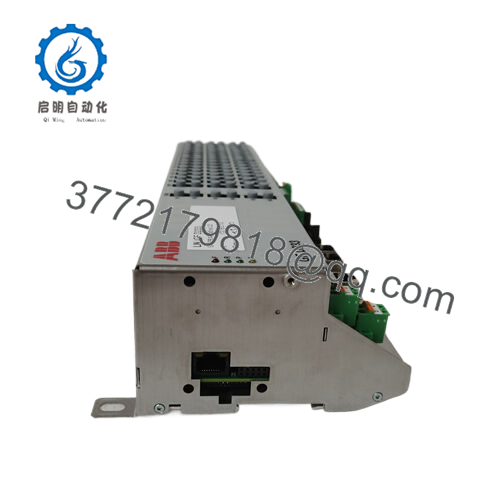
 WhatsApp: +86 16626708626
WhatsApp: +86 16626708626 Email:
Email:  Phone: +86 16626708626
Phone: +86 16626708626